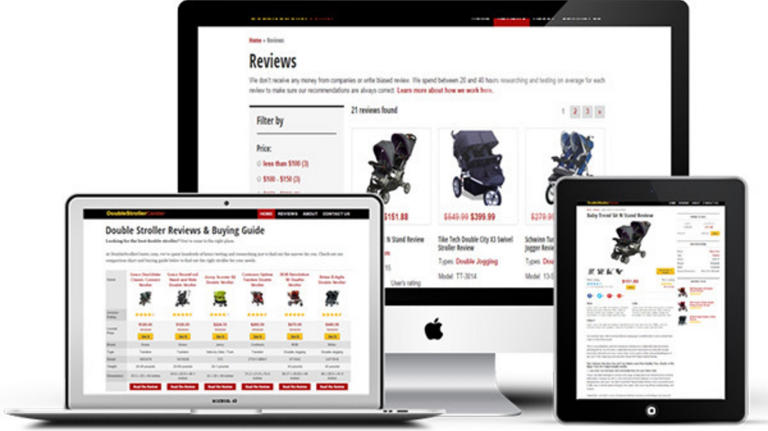Before we proceed with the tips mentioned in this article, I want to clarify that all the methods presented here require no initial investment other than having a computer and a smartphone with a camera. This means you won’t find any nerve-wracking stock investments, complicated funds, convoluted savings schemes, bitcoin investments, or strategies involving telecom discounts or point accumulation. However, for those who wish to maintain their regular jobs and seek ways to earn a substantial income through side jobs, these tips might be helpful for employees or homemakers.
Also Read- Millions will soon receive extra money from the government, check if you qualify
START: Start a blog or WordPress website
First, let me tell you upfront that the “side jobs” that will be introduced here are the most efficient “content businesses” in terms of time invested. The reason is that content can be distributed infinitely without inventory or expiration date. Let’s illustrate this further: working part-time as a substitute driver after work might earn about $10 per hour. In that hour, you can make a maximum of $10. However, if you sell discounted cosmetics online after purchasing them cheaply, you’ll eventually run out of inventory and cannot sell expired items.
On the other hand, with content such as a blog or a WordPress website, you can use a single article to generate income through various methods, such as two, five, or even ten different revenue streams. How is this possible? I’ll explain the various revenue streams a single blog post or WordPress article can bring.

1. Google AdSense | Monthly Income: $800 to $15K
Google AdSense is the most cost-effective CPC (Cost-Per-Click) ad platform. While other CPC ad platforms exist, such as Daum Adfit, Naver Adpost, SponsorAd, and Clickmon, AdSense is ideal if you want a higher return on investment. Countless users earn over $800 per month through AdSense. With consistent production of high-quality content for about 2 to 6 months, achieving a monthly income of $800 is possible. You may need at least a year to reach the $8000 mark and actively promote through various portals, forums, communities, and social media platforms.
2. Native Content Advertising | Monthly Income: $250 to $1500
Native content advertising is another type of CPC ad that many online media platforms use. It involves disguised advertisements that appear like regular articles or posts. When visitors click on these ads, revenue is generated for the content creator.
Also Read- Fake Rs 2,000 notes dumped near NICE Road create buzz
3. CPA (Cost Per Action) | Monthly Income: $250 to $8000
CPA is an advertising model where the advertiser pays the content creator for each visitor’s action. For instance, while AdSense or native content ads generate revenue when visitors click on the ads, CPA requires visitors to take further steps, such as signing up for financial consulting or applying for a diet program, before revenue is earned. As these actions require more engagement from the visitor, the payment per action can range from $20 to $100 or even more. However, integrating CPA ads seamlessly into content might be challenging for beginners due to fierce competition.

4. Affiliate Program | Monthly Income: $500 to $8000
An Affiliate Program is similar to affiliate marketing or referral programs. Some of the most well-known affiliate platforms include Amazon, Etsy, Alibaba, and domestically, Interpark, and 11st. In an affiliate program, visitors to your blog or website can follow the links you provide to online shopping sites like Amazon and make purchases, resulting in commissions for you. Blogs focusing on topics such as cameras or gaming consoles can generate significant income through Amazon affiliates. Commissions typically range from 4% to 10% of the product’s selling price, and for higher-priced items like cameras, the commissions can be quite substantial.

5. YouTube Videos | Monthly Income: $800 to $15,000
The easiest method is repurposing my existing content by creating PowerPoint slide-style videos with subtitles, essentially creating compilations. Many working professionals are hesitant to show their faces on their YouTube channels. However, they can still make videos without revealing their identity or using their voices to earn money. It’s worth noting that YouTube also generates ad revenue through Google AdSense. Assuming an average of $1 per 1,000 views, you can make money on YouTube without compromising the after-work hours allotted to working professionals. Reusing content from your blog or website to create YouTube videos is the most efficient approach.
Also Read- 3 money myths that are hurting your savings

6. iTunes | Monthly Income: $80 to $400
While running a blog and creating content, there will likely be opportunities to feature music or apps that are relevant to your content. In such cases, you can join the iTunes Affiliate Program and place affiliate links, earning approximately 7% commission. Although the commission may seem lower than other advertising or revenue structures, the wide range of link placement options offers ample flexibility.

7. Stock Photo Sales | Monthly Income: $80 to $250
As you operate a blog or website, you may often take pictures using your smartphone or digital camera. Instead of letting these photos go to waste, why not monetize them? Platforms like Shutterstock, Dreamstime, iStock Photo, and Fotolia allow you to upload your pictures for sale. Each time a user from these sites downloads your photo, you earn around 30 cents in revenue.
Also Read- Small ways to save money you can start today

8. Utilizing Talent Marketplaces | Monthly Income: $400 to $1500
Various online talent marketplaces offer options to find one or two skills that can be utilized. Moreover, if you already run a blog or website, you have even more options. For instance, you can provide a “talent” by posting specific advertisements on your blog and, in the case of the author, offering blog or marketing-related consulting talent that can lead to paid lectures.

9. Posting Articles Related to Earnings or Side Jobs for Income | Monthly Income: $50 to $100
If you plan to gather and share information about earnings or side jobs, instead of wasting time in cafes or forums where you only gain points or rankings for your posts, consider using platforms to earn money by writing articles, leaving comments, and participating in events. In Korea, platforms like Blogermoney allow you to get information about blogs and earnings, leave comments, and receive actual cash deposits. Similarly, community sites like Sensforum will enable you to include your personal AdSense in your written articles, earning all the revenue it generates.
Also Read- Fake Rs 2,000 notes dumped near NICE Road create buzz

10. Facebook Page Ads | Monthly Income: $200 to $1,000
Earnings from Facebook ads vary depending on the number of likes on your page. However, if you continuously share high-quality blog content on your page without investing extra time, you can create another source of income by displaying external ads for payment.

11. E-book | Monthly Income: $100 to $5,000
Anyone can publish an e-book in the Amazon Kindle Store. However, it’s not necessary to start writing a book from scratch immediately after work. Instead, you can select specialized portions from your existing blog or website content to create an e-book. Just like YouTube videos, you can also compile and edit existing content. In Amazon Kindle, you can sell e-books ranging from $2 to $8 per copy and receive 70% of the total sales as commission. Additionally, since there is no inventory, you earn revenue each time a user downloads your e-book.
Also Read- 3 money myths that are hurting your savings

12. Blog Experience Events | Monthly Income: $300 to $1,000
Finally, you can participate in blog experience events after growing your blog or website. Typically, bloggers apply for experience events through intermediaries such as Weble or AllReview, where they receive a modest support fee of around $20 per content piece. However, you directly contact talent marketplaces or companies for participation in experience events without deducting intermediaries’ fees. In that case, you can receive support fees of up to $50 or $100 per content piece.








































